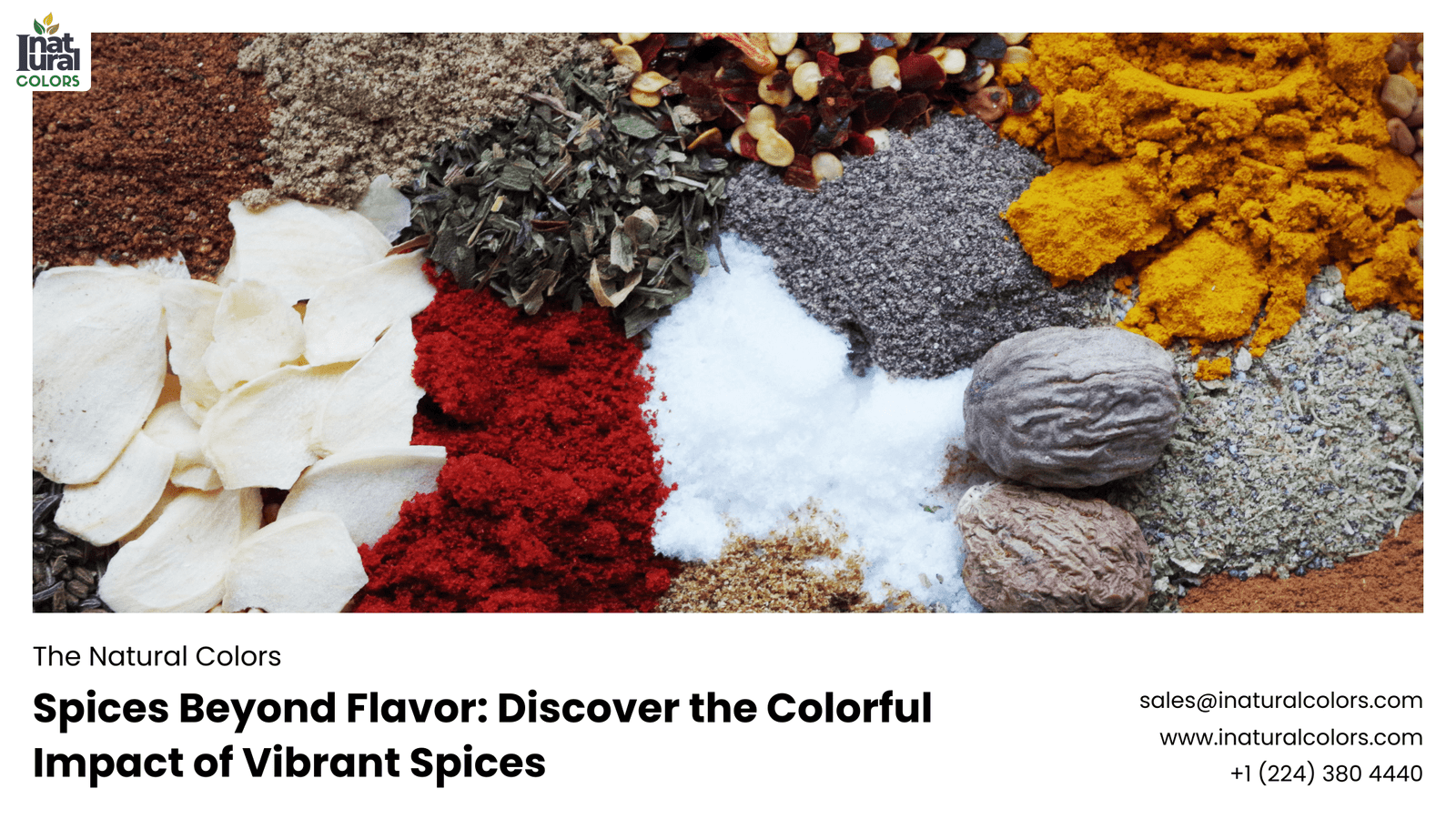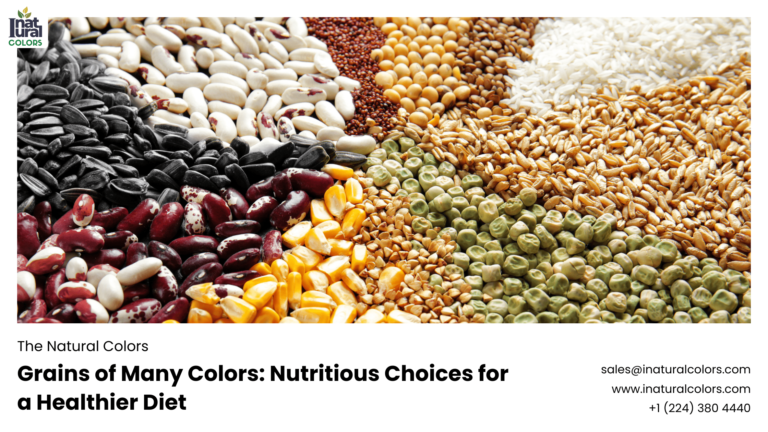Beautiful Plants For Your Interior

Spices Beyond Flavor: Their Colorful Impact
Introduction
Ever thought about the magic dust in your pantry that does more than just tickle your taste buds? Yes, I’m talking about spices! They’re the unsung heroes that elevate our dishes from bland to grand. But did you know that spices go beyond just flavor? They bring vibrant colors to our plates and play significant roles in our health and culture. So, let’s dive into the colorful world of spices and uncover their multifaceted impacts.
The Science of Spice Colors
Natural Pigments in Spices
Spices get their stunning hues from natural pigments. For instance, the golden yellow of turmeric comes from curcumin, while paprika owes its fiery red to capsanthin. These pigments aren’t just for show—they pack a punch in terms of health benefits and influence our food experience in profound ways.
How Colors Influence Perception
Believe it or not, the color of food can affect how we perceive its taste and quality. Bright, vibrant dishes are often associated with freshness and flavor. That’s why chefs and food enthusiasts emphasize the visual appeal of their creations, making colorful spices indispensable in the culinary world.
Health Benefits of Colorful Spices
Antioxidant Properties
Many colorful spices are rich in antioxidants. For example, turmeric is loaded with curcumin, which helps combat oxidative stress and inflammation. These antioxidants are crucial in protecting our cells from damage and promoting overall health.
Anti-inflammatory Benefits
Spices like ginger and turmeric are renowned for their anti-inflammatory properties. They can help reduce the risk of chronic diseases, including heart disease and arthritis. Incorporating these spices into your diet can be a tasty way to support your health.
Immune System Boost
Certain spices, such as cloves and cinnamon, have compounds that boost the immune system. They help your body fight off infections and stay resilient against illnesses. Adding a pinch of these spices to your meals can give your immune system a natural lift.
Culinary Uses of Colorful Spices
Enhancing Aesthetic Appeal
A sprinkle of bright yellow turmeric or deep red paprika can transform a dish from ordinary to extraordinary. These spices add a burst of color that makes food visually appealing and more enjoyable to eat.
Balancing Flavor Profiles
Colorful spices are not just about looks; they balance the flavors in your dishes. For instance, the sweetness of cinnamon can counterbalance the bitterness of certain vegetables, creating a harmonious flavor profile.
Traditional and Modern Dishes
From traditional curries and stews to modern fusion cuisine, colorful spices play a pivotal role. They bring authenticity to traditional recipes and add an innovative twist to contemporary dishes.
Popular Colorful Spices and Their Uses
Turmeric
Health Benefits
Turmeric is a powerhouse of health benefits, thanks to its active compound, curcumin. It’s known for its anti-inflammatory and antioxidant properties, which help in managing various health conditions.
Culinary Applications
Turmeric is a staple in many Asian dishes, lending its golden color to curries and rice dishes. It’s also used in smoothies and teas for its health benefits.
Paprika
Health Benefits
Paprika is rich in vitamins A and E, which are essential for eye health and skin protection. It also has antioxidant properties that help in reducing inflammation.
Culinary Applications
Paprika adds a sweet and spicy kick to dishes. It’s perfect for seasoning meats, adding depth to stews, and even sprinkling over roasted vegetables for an extra pop of color.
Saffron
Health Benefits
Saffron is known for its mood-enhancing properties and can help in alleviating symptoms of depression. It’s also packed with antioxidants that promote overall health.
Culinary Applications
This luxurious spice is used in dishes like paella and biryani. Its vibrant yellow color and unique flavor make it a prized ingredient in many cuisines.
Cinnamon
Health Benefits
Cinnamon is excellent for regulating blood sugar levels and has anti-inflammatory properties. It’s also a great source of antioxidants.
Culinary Applications
Cinnamon is versatile and used in both sweet and savory dishes. From cinnamon rolls to spiced meats, it adds a warm, comforting flavor.
Cultural Significance of Spices’ Colors
Historical Context
Throughout history, spices have been more than just ingredients; they’ve been symbols of wealth and power. The rich colors of spices like saffron and turmeric have been associated with royalty and prosperity.
Symbolism in Various Cultures
In many cultures, spices hold symbolic meanings. For example, in Indian culture, turmeric is used in rituals and ceremonies for its auspicious color, symbolizing purity and prosperity.
How to Choose the Right Spice for Your Needs
Matching Spices to Dishes
Choosing the right spice can elevate your dish. Consider the flavor profile you want to achieve and select spices that complement your ingredients.
Considering Health Benefits
If you’re looking to boost your health, opt for spices known for their medicinal properties. Turmeric, for instance, is great for its anti-inflammatory benefits, while cinnamon helps in regulating blood sugar.
Experimenting with Color
Don’t be afraid to experiment with colorful spices. They can add a new dimension to your dishes and make your meals more exciting and visually appealing.
Tips for Storing and Preserving Colorful Spices
Ideal Storage Conditions
To preserve the color and potency of your spices, store them in a cool, dark place. Airtight containers are ideal to keep moisture and light at bay.
Preventing Color Loss
Exposure to air, light, and heat can cause spices to lose their color and flavor. Always keep them tightly sealed and away from direct sunlight.
DIY Spice Blends for Vibrant Dishes
Recipes for Homemade Blends
Creating your own spice blends is a fun way to customize flavors. Try mixing paprika, garlic powder, and cumin for a versatile blend that works with meats and vegetables.
Customizing Blends for Personal Preferences
Adjust the ratios of spices in your blends to suit your taste. If you prefer a bit more heat, add extra cayenne pepper. For a sweeter touch, increase the cinnamon.
Spices in Modern Food Trends
The Rise of Instagrammable Dishes
Colorful spices are a big hit in the world of Instagrammable food. Bright, eye-catching dishes are more likely to be shared, making spices an essential tool for food bloggers and influencers.
Fusion Cuisine and Colorful Spices
Modern fusion cuisine often incorporates colorful spices to create unique, vibrant dishes. This trend celebrates the diversity of flavors and cultures, bringing new excitement to the dining experience.
Spices Beyond the Kitchen
Uses in Traditional Medicine
Many spices have been used in traditional medicine for centuries. Turmeric, ginger, and cinnamon are just a few examples of spices that have medicinal properties and are used to treat various ailments.
Spices in Beauty and Skincare
Spices like turmeric and cinnamon are also popular in beauty and skincare. They are used in DIY masks and scrubs for their anti-inflammatory and antioxidant benefits.
Environmental Impact of Spice Production
Sustainable Sourcing
To minimize the environmental impact, look for spices that are sustainably sourced. Fair trade and organic certifications can help ensure that your spices are produced in an environmentally friendly manner.
Supporting Ethical Practices
Buying from suppliers who support ethical practices can make a big difference. This helps in promoting fair wages and working conditions for farmers and workers in the spice industry.
Economic Impact of the Spice Trade
Global Spice Market
The global spice market is a significant part of the economy, with spices being traded across continents. This trade supports millions of livelihoods worldwide.
Supporting Local Farmers
By purchasing spices from local farmers, you can support small-scale agriculture and contribute to the economic well-being of farming communities.
Common Myths About Spices and Their Colors
Debunking Misconceptions
There are many myths about spices, such as the idea that brightly colored spices are always hot or that they lose their flavor quickly. In reality, the color of a spice doesn’t always indicate its heat level, and proper storage can maintain their potency for a long time.
Evidence-Based Facts
Scientific research supports the health benefits of many spices, debunking myths and highlighting their importance in a balanced diet.
Conclusion
Spices are truly magical—they add flavor, color, and health benefits to our lives. Whether you’re cooking a traditional meal or experimenting with new recipes, colorful spices can elevate your dishes and make your culinary adventures more exciting. So, next time you reach for that spice jar, remember the vibrant impact it has beyond just flavor.
FAQs
- What spices are best for their health benefits?
- Turmeric, ginger, and cinnamon are some of the best spices known for their health benefits, including anti-inflammatory and antioxidant properties.
- How do I store spices to maintain their color?
- Store spices in airtight containers in a cool, dark place to maintain their color and flavor.
- Can I use colorful spices in desserts?
- Absolutely! Spices like cinnamon and cardamom are commonly used in desserts to add warmth and depth of flavor.
- Are there any side effects of using too many spices?
- While spices are generally safe, using them in excessive amounts can sometimes cause digestive issues or allergic reactions. It’s best to use them in moderation.
- How can I incorporate more colorful spices into my daily meals?
- Start by adding small amounts of spices to your favorite dishes, experimenting with new recipes, and creating your own spice blends to suit your taste.



